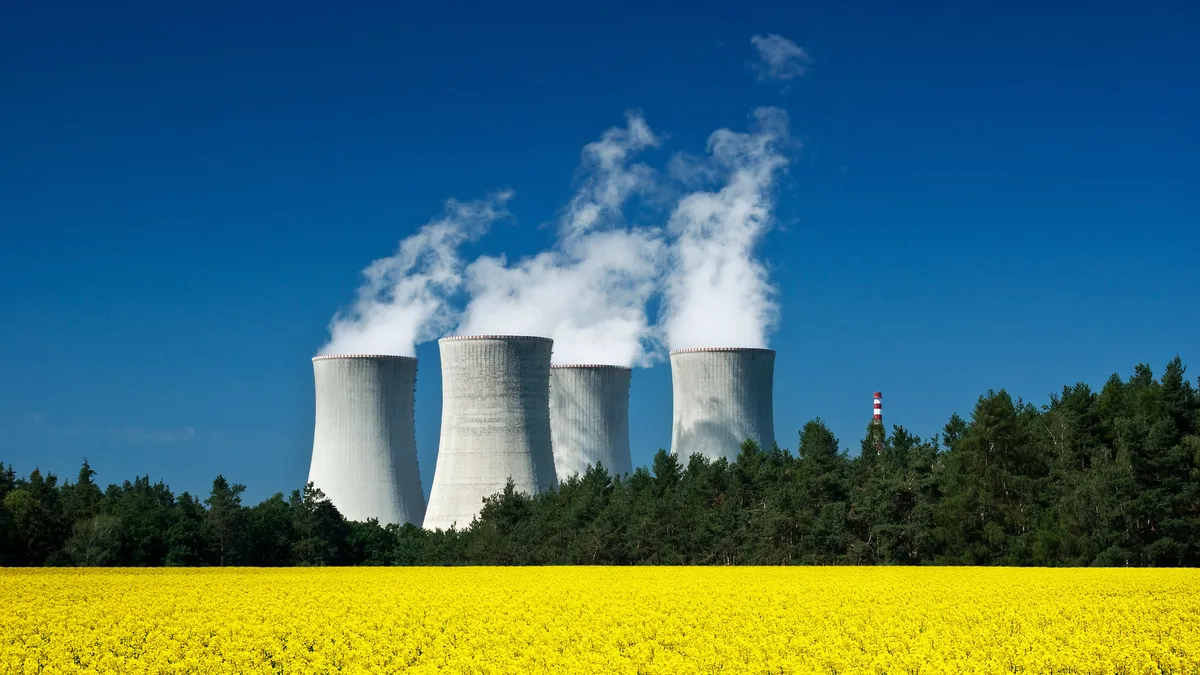Dive Brief:
- More than 5,000 MW of nuclear capacity is scheduled to be installed between 2016 and 2020, according to the U.S. Energy Information Administration (EIA), more than enough to stem the tide of plant closures announced recently.
- There are five new reactors currently under construction, and the Nuclear Regulatory Commission recently issued a new operating license to Tennessee Valley Authority (TVA) for its 1,150-MW Watts Bar-2 unit.
- But EIA's analysis includes a note that it did not get a chance to incorporate the impacts of the most recent announcement of an impending closure, Entergy Corp.'s 838 MW James A. FitzPatrick nuclear facility in Scriba, N.Y.
Dive Insight:
In spite of several recent closure announcements, EIA on Monday said the nation's nuclear capacity would grow between 2016 and 2020 – but it also had to include a note saying it had not accounted for the impacts of the most recent announcement from New Orleans-based Entergy that same day about its FitzPatrick nuclear facility.
While the United States will lose more than 2,000 MW of capacity by 2019, EIA noted that 5,000 MW are slated to come online by 2020. Five new reactors are under construction, and the NRC has signed off on Watts Bar 2. Despite delays, the Vogtle plant in eastern Georgia and the V.C. Summer plant in South Carolina are expected online in within a few years.
Balancing that is Entergy's plan to close the 685-MW Pilgrim Nuclear Power Station in Massachusetts by 2019, possibly earlier. The 678-MW Oyster Creek Nuclear Generating Station in New Jersey is also scheduled to shut down in 2019. And as of this week, add Entergy's FitzPatrick plant to the list, now targeting closing next year or in 2017.
By some accounts, up to 11% of the United States' nuclear generation fleet is at risk of early retirement.
Cheap natural gas and unfavorable market dynamics have put pressure on nuclear generation, but some say greenhouse gas restrictions could lead to the resource's resurgence. On the other hand, the Obama administration’s finalized Clean Power Plan disappointed many nuclear generators. The five nuclear plants in construction will count toward emissions goals in the states where they are located, but not ones that are already in service. Existing plants, while they keep emissions lower than they would otherwise be, do not further reduce greenhouse gas pollution, leading the agency to determine that they should not be counted toward state's emissions goals.
There is a push to extend operating licenses as well. Duke Energy, the second largest nuclear operator in the country, has indicated it will hold onto its fleet as long as possible. But its CEO cast doubt on the chances for new facilities.
“Nuclear will continue to be an important part of energy supplies in the Carolinas,” CEO Lynn Good said in October at the Winston-Salem Chamber of Commerce. But she also said, "whether or not new nuclear is a part of the picture remains to be seen.” Nuclear facilities are initially granted operating licenses for 40 years, and extensions for another two decades are not uncommon. Some operators are now considering 80-year operating lives, though some question the safety of that lifespan.














